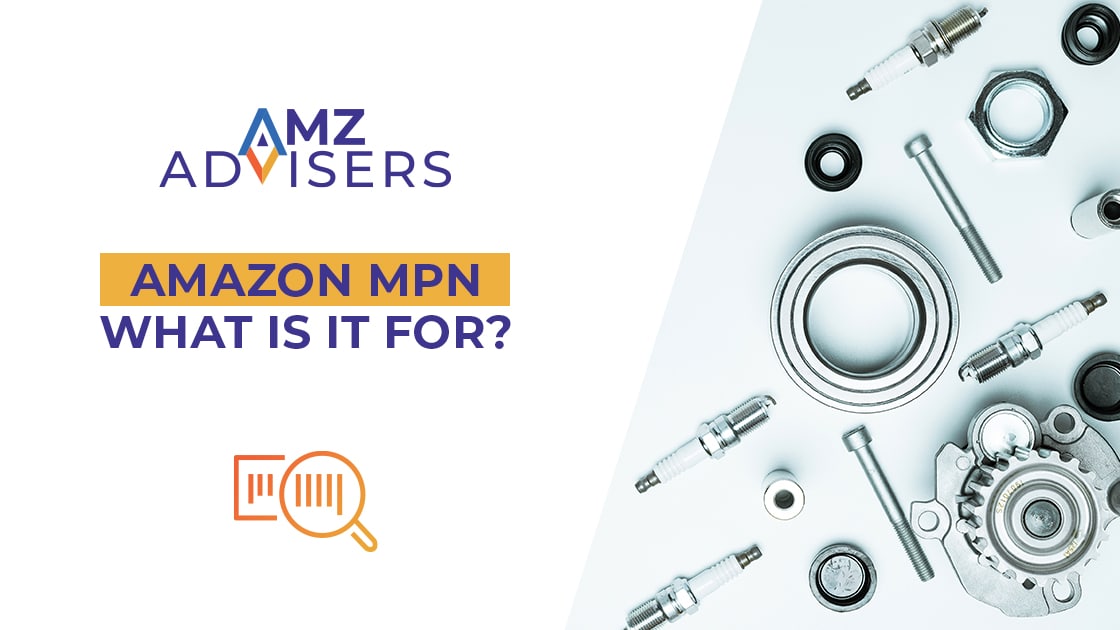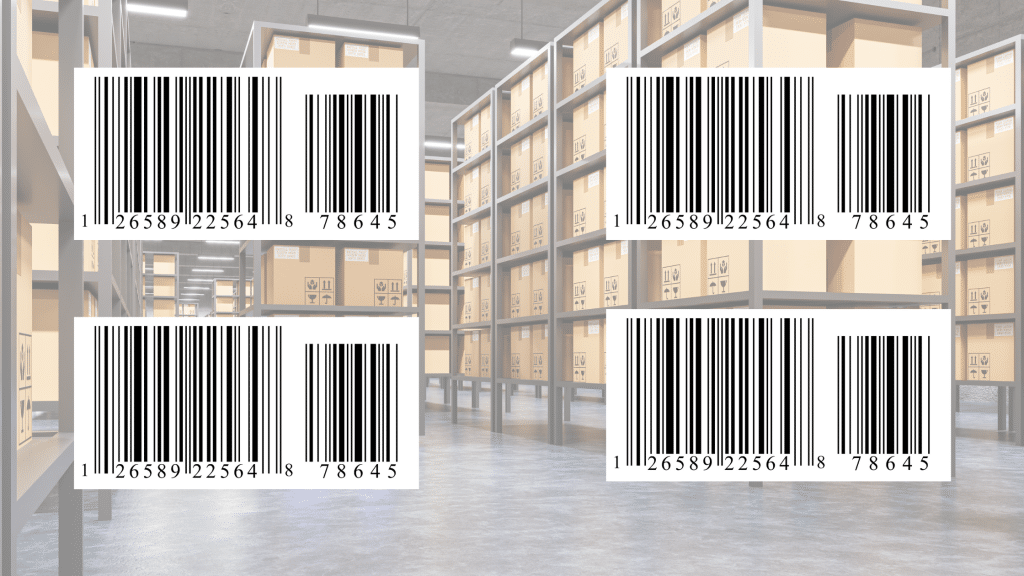
Amazon delivers approximately 1.6 million packages per day. So, it’s easy to understand why identifying products is a number one priority for the retail giant.
Amazon has specific systems in place to make sure that both sellers and buyers can be on the same page. The Amazon Manufacturer Part Number (MPN) is an essential asset in these systems.
But what exactly is this number? Below, we discuss how MPNs work and why you should care about it. Also, we will help you understand if this number is a requirement or an option for you, based on the products you sell.
What is the Amazon Manufacturer Part Number?
Manufacturer Part Numbers (MPNs) are unique codes assigned by manufacturers to individual products. MPNs help both Amazon and customers differentiate one product from another.
When a product is made, it’s given a unique MPN to distinguish it from other items in the manufacturer’s lineup. This helps with inventory management, tracking warranties, and providing customer support.
Each MPN is assigned by the manufacturer and holds specific information about the product, such as its model, version, or configuration.
Now, what does an MPN actually look like? Well, it varies depending on the manufacturer and the product. Some MPNs are simple alphanumeric codes, while others may include or other symbols. For example, an MPN might look something like “ABC1234” or “XYZ-4567.”
An Amazon MPC is one way to uniquely identify specific products. This assures the buyer that their purchase is 100% genuine, and it protects sellers against counterfeit parts.
But this is not the only option for sellers, of course. Some brands use other codes for specific items or purposes. For instance:
- SKU (Stock Keeping Unit). A series of numbers used in tracking inventory or stocks.
- ISBN (International Standard Book Number). A product code used by publishers, booksellers for stock control purposes.
- GTIN (Global Trade Item Number). A barcode used to manage and track stock on a global scale.
Each of these codes have one thing in common: but they’re all that’ll protect your reputation. This also applies to the Amazon manufacturer part number.
Are MPNs and SKUs the same?
MPNs and SKUs both help keep track of products, but they’re not exactly the same.
MPNs are codes given by manufacturers to identify their products. They stay the same no matter where you buy the item. Think of them as the product’s birth certificate—it tells you exactly what it is.
SKUs, on the other hand, are codes made up by stores to manage their own inventory. They can be different for the same product when sold in different stores. SKUs are like the store’s secret code for organizing their shelves and tracking sales.
While both MPNs and SKUs help identify products, MPNs come from the manufacturer and stay the same everywhere. In contrast, SKUs are made by the store and can vary from place to place.
Related content: Amazon FNSKU
What’s the importance of a manufacturer part number for Amazon sellers
Now, why should you care about Amazon Manufacturer Part Numbers? For starters, using the right MPN can improve your product’s visibility. Customers rely on MPNs to find what they’re looking for. So, having the correct MPN attached to your listing can make a world of difference.
Amazon MPNs also help streamline your inventory management. When you use the right MPN, Amazon knows exactly which product you’re selling, making it easier to track and manage your stock levels.

MPNs vs Counterfeit Products
Counterfeit products are fake items made to look like the real deal, usually to trick people into buying them. Now, let’s talk about how the Amazon Manufacturer Part Number can help tackle this issue:
- Spotting the Real Deal. When you see an MPN listed with a product, it’s a sign that it’s genuine. This helps shoppers tell the difference between real and fake products.
- Finding the Fakes. MPNs help sellers and platforms keep an eye out for counterfeits. By checking MPNs against a database of approved products, they can find and remove fake items from the online store.
- Protecting Brands. Brands use MPNs to keep track of their products from factory to customer. This way, they can catch anyone trying to copy their stuff and take legal action.
- Building Trust. When shoppers see MPNs, they feel safer buying products. They know they’re getting the real thing, which makes them more likely to shop again in the future.
Do Your Products Require an Amazon MPN?
Not every product you sell needs an MPN, so it is a good idea to check if you have to worry about this or can focus your energy on other challenges.
Some of the best ways to understand if your product or industry require an Amazon manufacturer part number are:
- Category Requirements. Start by looking up the specific category your product falls into. Some categories, like electronics, automotive parts, and industrial goods, often require MPNs for listings. You can find category-specific requirements in Amazon’s Seller Central or by reaching out to Amazon Seller Support.
- Product Listing Policies. Amazon has specific guidelines for product listings, including MPNs. Take some time to review Amazon’s policies to see if your product fits into any categories that require MPNs. These policies are regularly updated, so it’s essential to stay informed.
- Consult with Manufacturers or Suppliers. Manufacturers often have detailed information about product specifications and requirements. They can provide insight into whether your product typically comes with an MPN and if it’s necessary for listing on Amazon.
- Product complexity. Think about the complexity of your product and whether having an MPN would benefit customers. Products with various models, versions, or configurations may benefit from having MPNs to differentiate between them and ensure accuracy in listings.
- Evaluate Customer Expectations. Consider what information customers might expect to find in your product listings. If an MPN would help customers make informed purchases, it may be worth including one.
I don’t know my MNP, what should I do?
If you’re unsure about your Amazon Manufacturer Part Number or whether your product needs one, don’t worry—there are steps you can take to figure it out.
Start by checking any product documentation you have. This could include product manuals or paperwork. Often, the MPN is listed there along with other details. Look for labels such as “Manufacturer Part Number” or “MPN.”
Next, inspect the product itself. Sometimes, manufacturers print or engrave the MPN directly onto the product. Check the surface for any numbers, letters, or codes that might be the MPN.
If you’re still unsure, consider reaching out to the manufacturer directly. They should be able to provide you with the correct MPN for your product or offer guidance on whether your product needs one for listing.
What if you can’t confirm the product’s MPN? While it’s technically possible to list a product without an MPN, it’s generally not recommended. Using the correct MPN helps ensure accurate product identification and can improve your product’s visibility.
Additionally, Amazon may require certain product categories to have MPNs for listing, so it’s essential to comply with their guidelines.
Using the wrong MPN, or listing a product without one, could lead to confusions and potential issues with your listings. Customers might have trouble finding your product, or they could receive the wrong item.
This can result in negative reviews, increased returns, and reputational damage. Therefore, it’s crucial to take the time to confirm the correct MPN for your product and ensure accurate listings on Amazon.
How the Amazon Manufacturer Part Number can Improve Your Amazon Sales
This unique identifier is also used in Amazon’s internal and external searches, so it is highly encouraged to provide an MPN for greater product visibility. As a seller, you can use this to your advantage to increase Amazon sales.

Conversions
If you’re a seller who can provide a Manufacturer Part Number and include these details in your listing, then you’ll have an edge and you will find yourself with a unique and profitable opportunity. If they are looking for a specific MPN and find it, most likely they will buy the part on the spot. A higher chance of conversion is at stake. Also, these buyers are less likely to return unwanted items and are likely to come back in the future.
SEO and Discoverability
Buyers use search engines when looking for a certain part. To increase your discoverability in the digital space, having MPN is of big help. This field is indexed by both Google and Amazon’s A9 algorithms. If you have it, there is a big chance you will be picked by both search engines and displayed in the results. This increases your chances of being seen by many more customers, and eventually generating more sales.
Fewer Returns
If you are a seller, you must aim for a lower return rate or better yet, no return at all for better ranking and ratings. When you sell the right and exact part or product to a buyer there is no chance of having it returned. You’ll be surprised by the amount of time and effort saved because of fewer returns.
Product Reviews
You will likely get good reviews from your buyer if you meet their expectations such as providing the exact part that they need, its functionality, and all. As sellers, we must be on top of the game and meet customers’ highly specific demands. Buyers will surely be delighted when they find a seller who can deliver. Then, they are more likely to leave positive product reviews.
Repeat Customers
If you can attain the above-mentioned advantages, there is a higher chance of getting repeat customers. They will not look for somebody else online because they already know where to go and get the exact items they want. You can build trust and they will keep coming back to you. This is one beauty of having an MPN on your listing.
Final Thoughts
To cap it off, an Amazon Manufacturer Part Number is a unique code used to more easily identify parts. MPNs are super important for keeping things organized on the website. They help customers find the products they’re looking for, and unlock better opportunities to boost their discoverability and conversion rates.
Put yourself in the shoes of the buyer or customer. If you are looking for a specific part with an MPN provided, chances are, you are getting the correct item. Time and effort spent is saved because it eliminates the guesswork that may eventually lead to a poor customer experience.
By understanding how MPNs work and using them right in your listings, you can make your products more visible and run your business smoother on Amazon.
So, take the chance to go beyond by putting an MPN in the optional field on your listing, and perhaps also in the title or on product photos and see the difference for yourself.
Authors
 Duline Theogene is a content writer and strategist with several years’ experience blogging on topics related to eCommerce, marketing, education, travel, and finance. Duline is passionate about traveling, learning languages, and discovering new cultures.
Duline Theogene is a content writer and strategist with several years’ experience blogging on topics related to eCommerce, marketing, education, travel, and finance. Duline is passionate about traveling, learning languages, and discovering new cultures.
 Antonella Fleitas is a freelance content writer from Argentina. Antonella worked with many projects to create fact-based, evergreen content about science, language learning, and culture. Her main goal is to build a strong content foundation for her clients, based on meaningful stories that people can learn from.
Antonella Fleitas is a freelance content writer from Argentina. Antonella worked with many projects to create fact-based, evergreen content about science, language learning, and culture. Her main goal is to build a strong content foundation for her clients, based on meaningful stories that people can learn from.
Discover more from reviewer4you.com
Subscribe to get the latest posts to your email.





